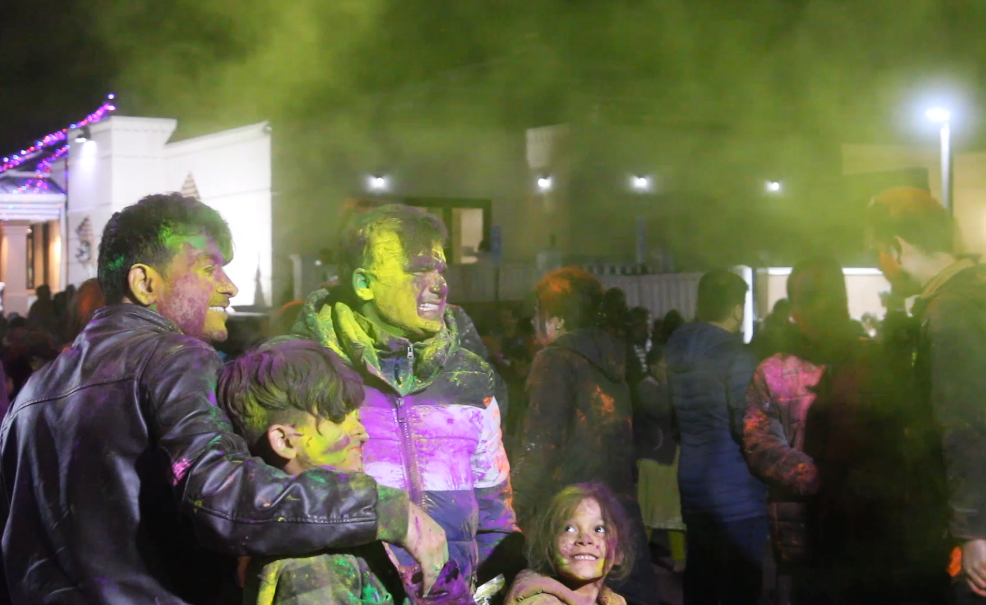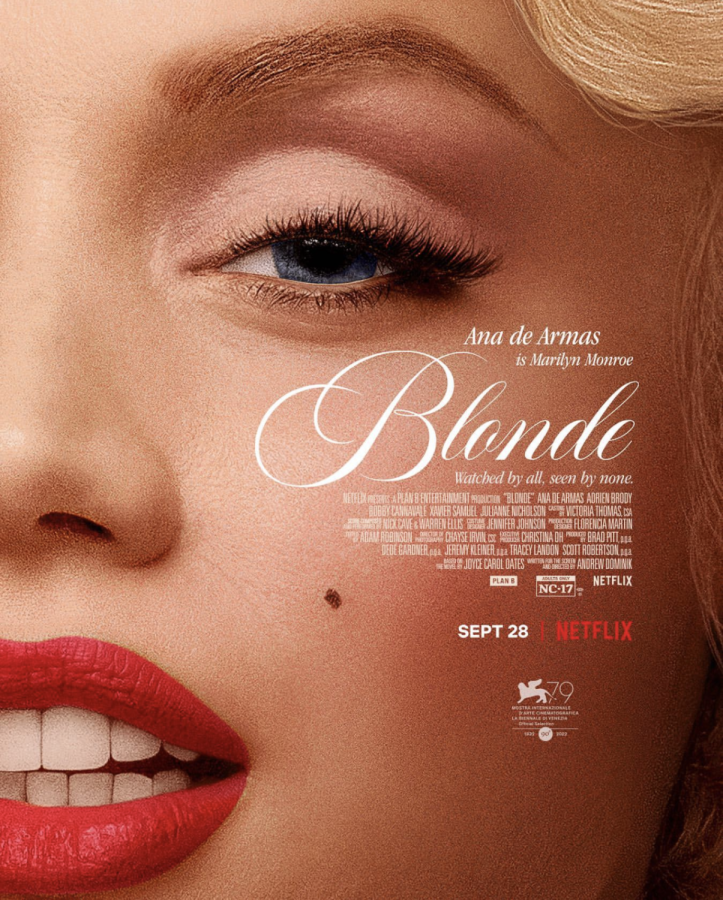Marilyn Monroe’s Inspiring Legacy Hits the Silver Screen in “Blonde”
“Blonde” is a film that expresses the tragic story of Marilyn Monroe’s life through obstacle, pain, sensuality, talent, and feminism
Promotional image for “Blonde” via Instagram (Ana De Armas)
Inspired by the controversial and legendary life of Marilyn Monroe, the movie “Blonde” hit streaming platform Netflix on Sept. 16
November 1, 2022
Decades after Marilyn Monroe’s death, her legacy still lives. Marilyn Monroe set the stage for a new wave of feminism, even though she was known as the nation’s most popular sex symbol.
The movie “Blonde” dives into the life of Marilyn Monroe (Ana de Armas) and her relationship with herself. This movie exposes how Monroe’s traumatic childhood with her mentally unstable mother and mysterious father affected her, such as how the lack of a father figure in her life led her to seek other men. Viewers could sense this desperation for a father figure in her sexual relationships with men.
Outside of the silver screen, viewers argue that some scenes may not be factual. For example, the scene where Monroe’s mother was attempting to drown Monroe in a bathtub may not have occured, as there is no evidence of this event. The events that took place in the movie were just dramatized factual events — Monroe was abused and threatened by her own mother, after all.
Monroe’s death was a moment that shook the world. Her death, caused by an overdose, was lead by heartbreak, fame and fortune, and being sexually exploited by the male gaze. However, the scene that portrayed this did not seem to sit well with viewers. Twitter user @remainsoflilies posted a review on the death scene, writing, “One more thing I should add to this thread that doesn’t have to do with any fabrication of Marilyn’s name but is simply just infuriating: director Andrew Dominik chose to film the death scene in blonde in the room Marilyn actually died in.” A tweet by @amxndareviews echoes these views on the movie: “#BlondeNetflix is distasteful. Even if it is a fictionalized story, there can be some care put towards the film. There is this emotional detachment from Marilyn Monroe that makes this such a dark and graphic film. It’s actually disturbing how exploitative this is.”
“Blonde” explores topics like domestic violence and feminism by zooming in on various experiences Marilyn lived through in the 1960s, as she was taken advantage of and exploited by unnecessary opinions and inappropriate stories. The movie shows how Marilyn escaped an abusive marriage and tried to take control of her personal life. It shows how strongly Monroe feels about women and how they should be treated not just in the film industry, but also in any setting. It displays how much fame and power can really destroy an individual. This film brought to light the undeserved oppression Marilyn received from the world while living such a controlled life.
Despite the harsh viewer commentary, Ana De Armas did a phenomenal job on screen. She effortlessly played the complicated role of Marilyn Monroe, consistently bringing entertainment. Ana’s chemistry with all the other characters were evident throughout the screenplay and was truly the highlight of the film. The artistic choice of filming most of the movie in black and white may seem boring to some, but it created an ominous impression and emphasized the importance of flashbacks in scenes.
Overall, we would recommend this movie not just for people who are fans of Monroe, but individuals who want a good cry, or to those who enjoy biopics. Showing the not-so-pretty Norma Jeane life of Marilyn Monroe seemed to be the film’s main priority, emphasizing themes such as feminism through excellent screenplay and direction.
“Blonde” is now available on Netflix.

















![The Phoenix varsity volleyball team lines up for the national anthem. “We were more communicative [with each other] during this game, and I feel like we kept our energy up, especially after the first set,” senior Jessica Valdov said.](https://theblazerrhs.com/wp-content/uploads/2024/10/DSC_0202-1200x800.jpg)








![Junior Alex Alkhal pitches the ball. “[I] just let it go and keep practicing so we can focus on our goal for the next game to get better as a team,” Alkhal said.](https://theblazerrhs.com/wp-content/uploads/2025/05/DSC_0013-1-1200x929.jpg)


























